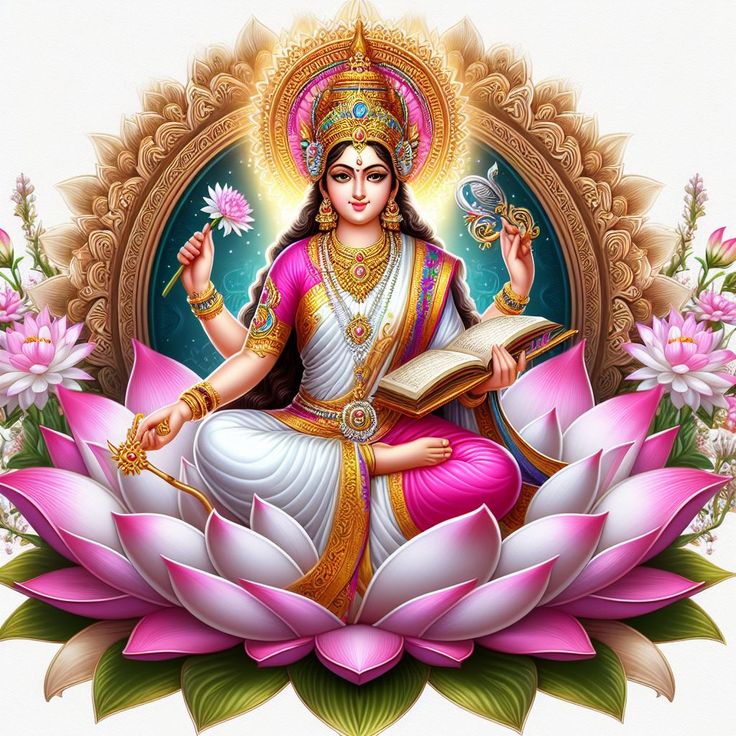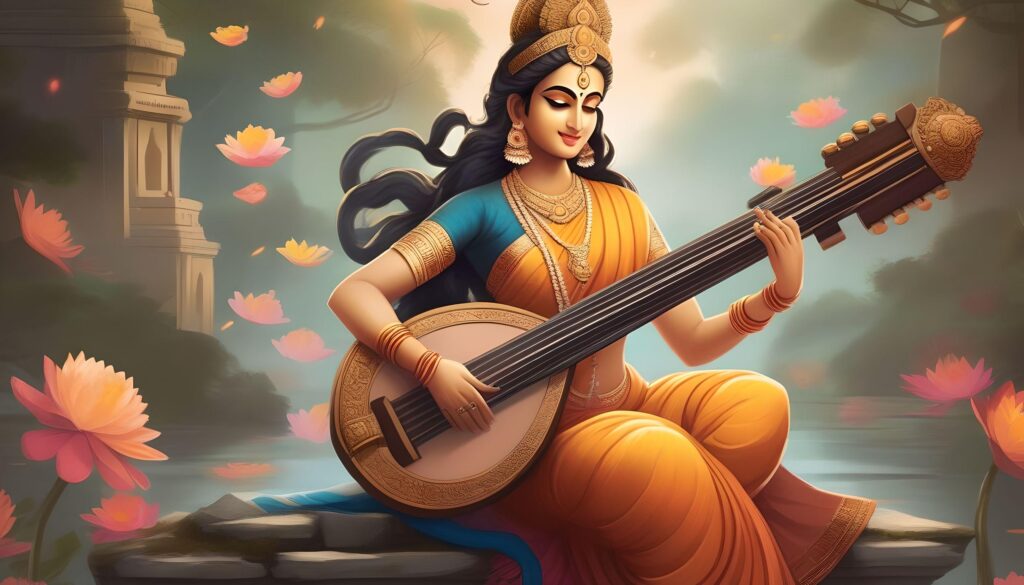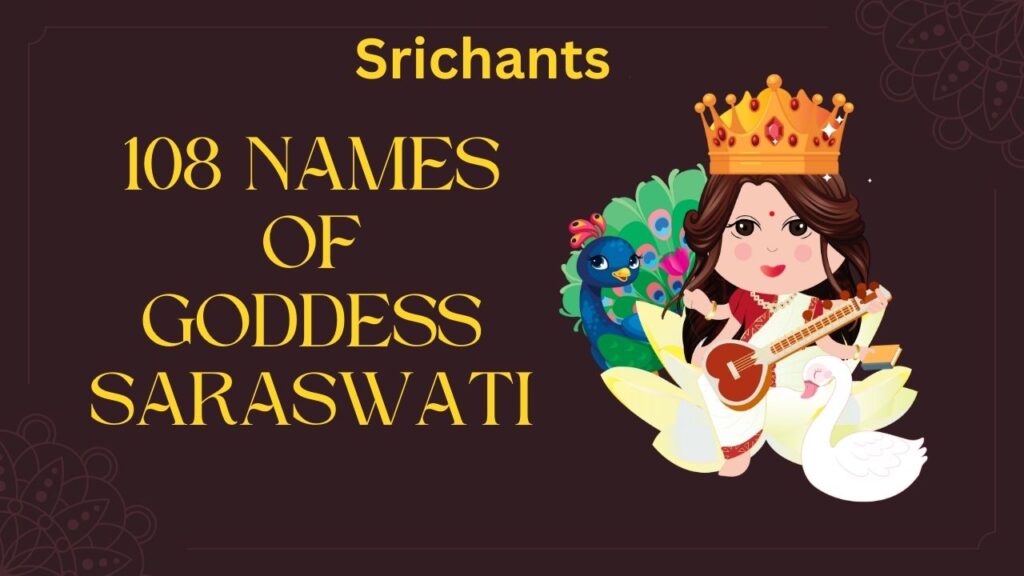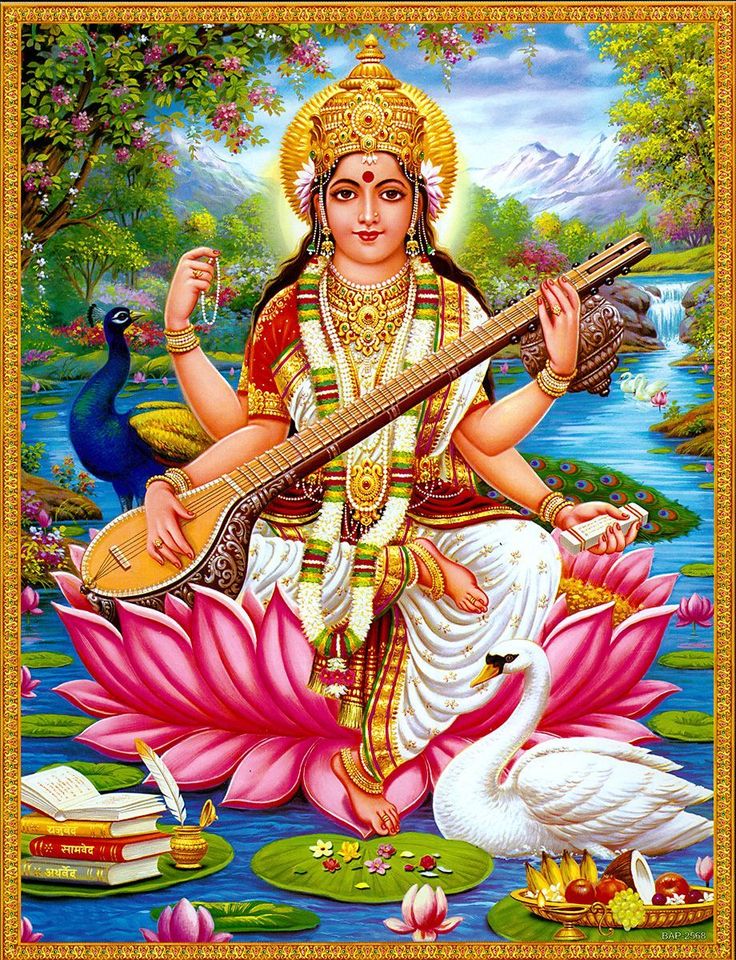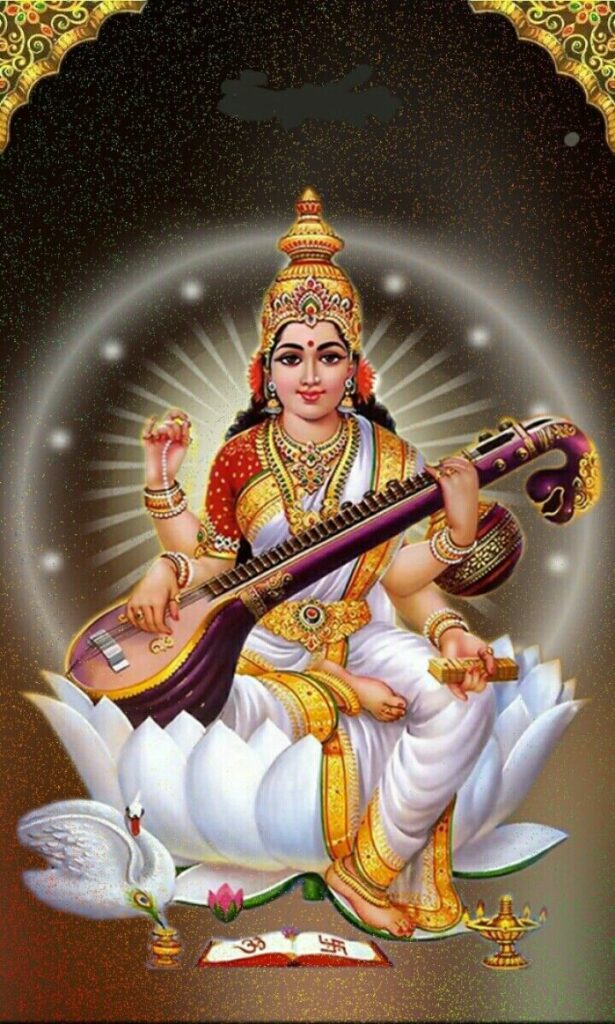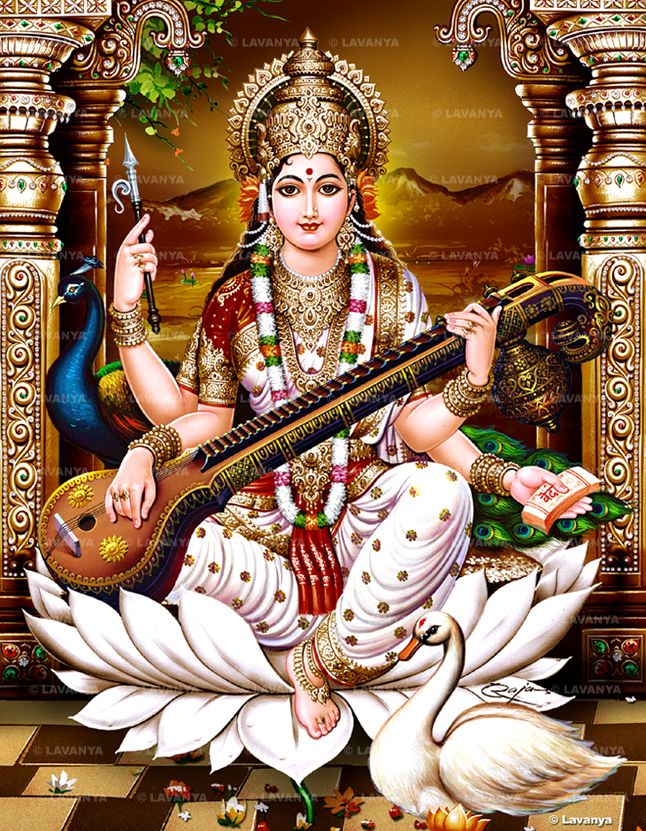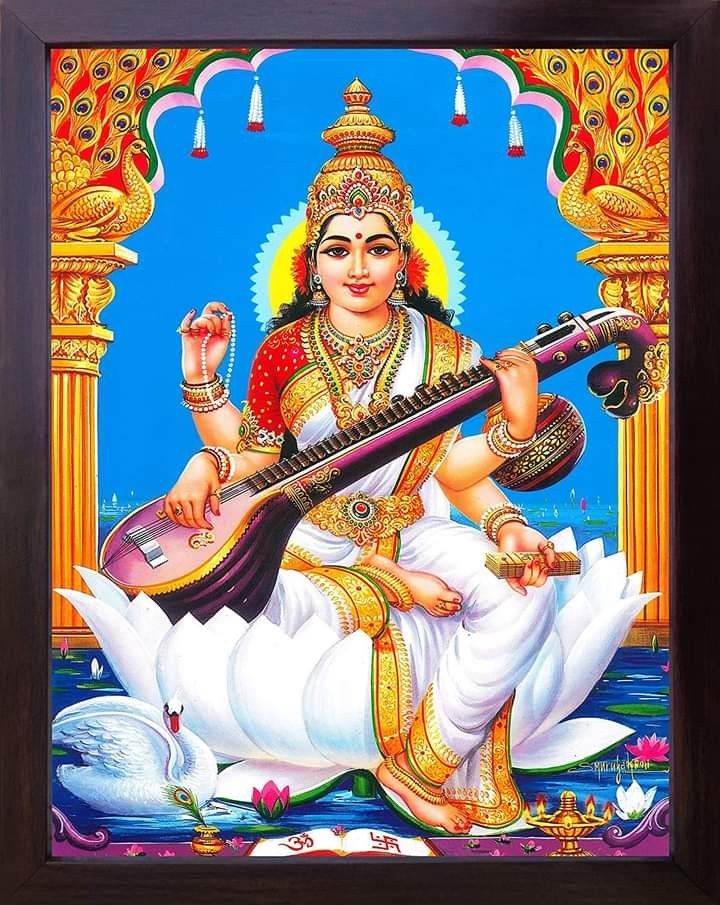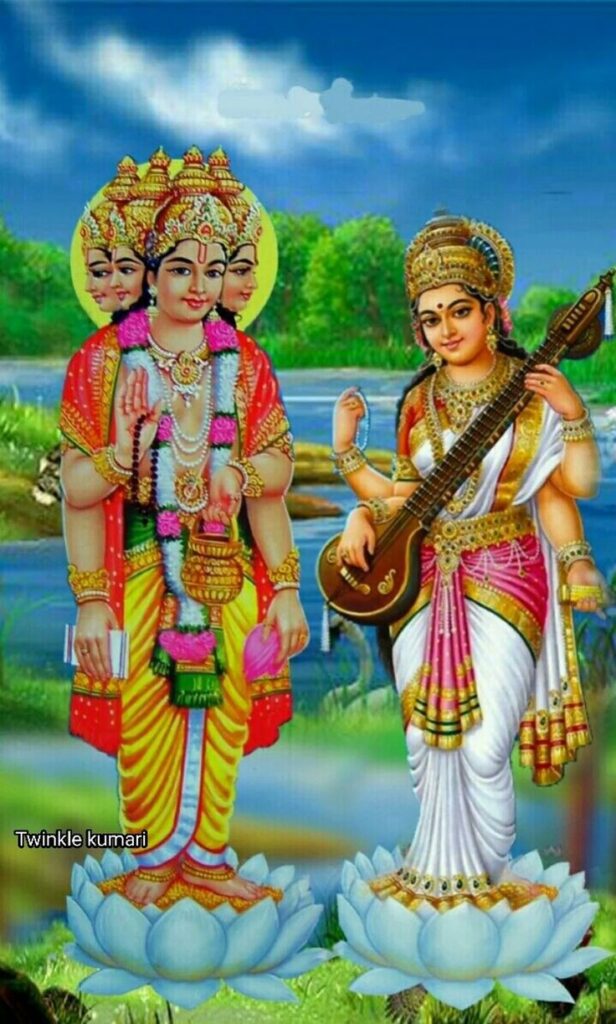Education Goddess | Saraswati Goddess of Learning
Introduction
Renowned for its complex tapestry of deities, each reflecting a different facet of the divine, Hinduism is the oldest alive religion in the world. Among these venerated leaders, Goddess Saraswati is unique in embodying knowledge, wisdom, and the creative arts. Saraswati’s impact goes much beyond the boundaries of spirituality as the companion of Lord Brahma, the maker of the cosmos, permeates the fundamental fabric of Hindu intellectual activities and education.
Saraswati’s Multi-layered Character
The divine character of Saraswati is a complicated tapestry spun with several threads of mythology and symbolism. Derived from the Sanskrit word “saras,” meaning “water,” or “essence of fluidity,” her name captures the ceaseless flow of knowledge and invention. Her many epithets, which each stress a different facet of her heavenly nature, include Bharati, Vidya, Sharada, Brahmi, and Vagdevi.
Saraswati, the goddess of speech, is intimately related with the ability of communication and language. She is regarded in the Vedic religion as Vak Devi, the goddess of speech, whose heavenly utterances are supposed to have spawned the universe. Epic stories like the Ramayana and Mahabharata highlight her role as the patroness of the arts, music, and literature, where she is summoned to bestow upon the heroes poetic inspiration and intellectual power.
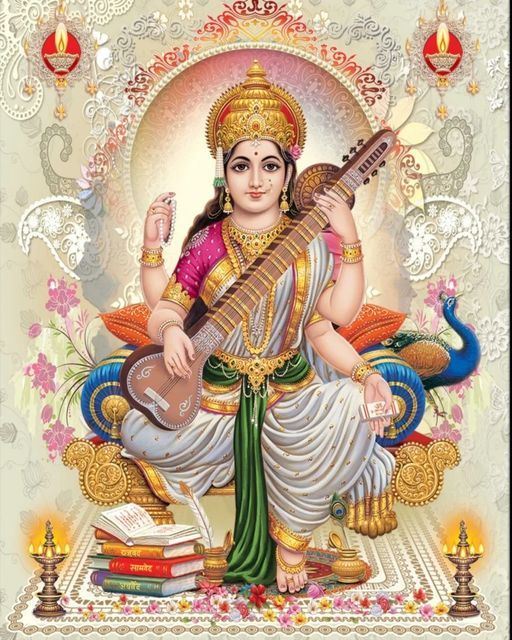
Saraswati’s Divine Associates and Celestial Lineage
Saraswati’s importance in the Hindu pantheon is underlined even more by her celestial ancestry and divine ties. She represents the creative and loving powers maintaining the cosmic order as the consort of Lord Brahma, the maker of the universe. The intrinsic link between knowledge and creation typically represents this relationship; Saraswati emerges from Brahma’s mouth during the act of creation.
Complementing the functions of Lakshmi, the goddess of money and prosperity, and Parvati, the goddess of strength and devotion, Saraswati represents the aspect of knowledge and wisdom in the Tridevi, the holy feminine trinity of Hinduism. Together, this trio captures the complex essence of the divine feminine and directs humans toward spiritual development and earthly fulfillment.
Saraswati’s Avatars and Mythological Storylines
A tapestry of gripping stories and the revelation of Saraswati’s celestial forms accentuates her presence in Hindu mythology. She is shown in the Bhagavata Purana as the consort of Lord Vishnu in his Hayagriva avatar, helping to retrieve the taken Vedas and so preserve the hallowed knowledge.
Focused on the devotion of the Divine Mother, the Shakta books honor Saraswati as one of the Mahavidyas, or Wisdom Goddesses. She represents the fiery and courageous side of the divine feminine as the Mahavidya Nila Saraswati, therefore embodying the transforming power of knowledge and the annihilation of ignorance.
Respected especially in the Kashmiri tradition, Saraswati’s Sharada avatar emphasizes her function as the patroness of wisdom and study. Renowned pilgrimage destination the Sharada Peeth draws followers looking for her blessings on spiritual enlightenment and scholastic excellence.
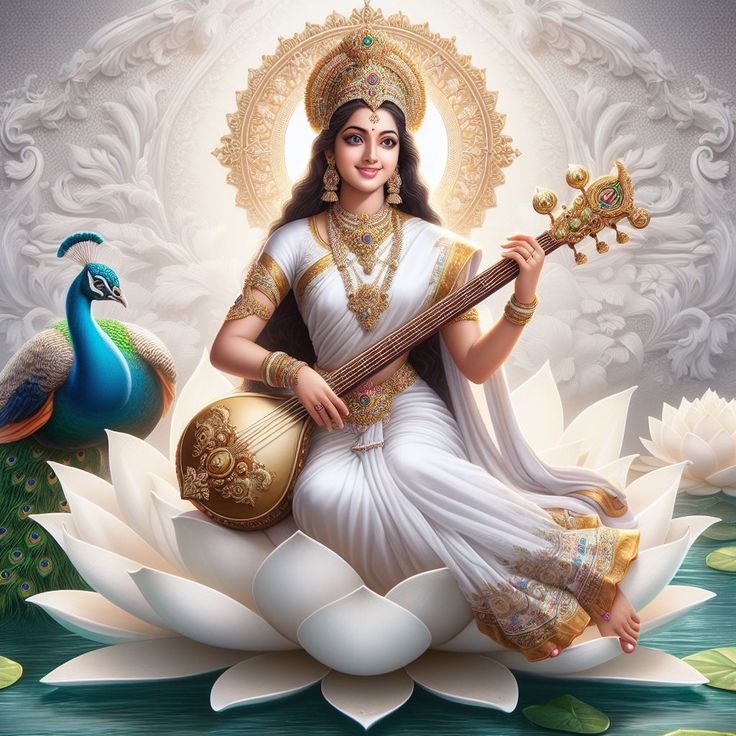
Saraswati’s Symbolic Representations and Iconography
Goddess Saraswati is visually shown as a rich tapestry of symbolism and imagery, each aspect suggesting a deeper spiritual and philosophical meaning. Usually shown as a lovely, modest woman with four arms, Saraswati’s image is evidence of her multifarious character.
Saraswati is holding a book, the Vedas and the storehouse of divine wisdom, a mala (rosary) signifying meditation and spiritual discipline, and a veena, the stringed instrument with harmonic resonance of the universe.
Since the swan, Saraswati’s vehicle, is thought to be able to distinguish milk from water, therefore reflecting the goddess’s function as the purveyor of true knowledge among the great ocean of ignorance, Saraswati’s vehicle is a potent emblem of discerning and taste.
Often seated atop a lotus flower, Saraswati’s emblem of the Supreme Reality and the transcendence of the physical world. Saraswati’s lotus seat represents the reaching of heavenly wisdom and the capacity to transcend the boundaries of the material world, just as the lotus blossoms in muck but remains unaltered by its contaminants.
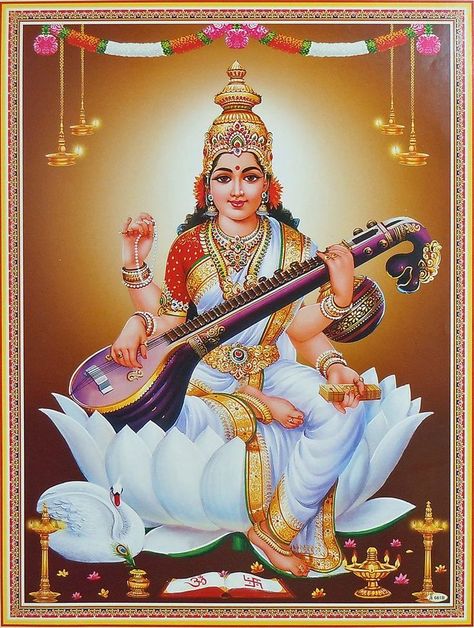
Meaning of Saraswati Puja and Vasant Panchami
With the festival of Saraswati Puja, sometimes known as Vasant Panchami, a prime example of the deep rooted respect for Goddess Saraswati in the Hindu educational and cultural terrain. Seen on the fifth day of the brilliant two-week Hindu month of Magha, this celebration symbolizes the birth of the goddess and the lucky start of the spring season.
Devotees from throughout India come to honor Saraswati on this day in search of her blessings for scholastic success, intellectual ability, and artistic inspiration. With students presenting prayers, flowers, and sweets to Saraswati’s statues, dressed in white to signify the purity of knowledge, educational institutions hold particular puja ceremonies.
Observed during Vasant Panchami, the custom of “Hate-Khori,” or “Khadi-Chuan,” whereby young children receive their first lessons in reading and writing, is much valued. This custom emphasizes Saraswati’s function as the patron of knowledge and wisdom, aiding the following generation in their search of truth.
Saraswati’s presence among the Hindu Diaspora
Beyond the Indian subcontinent, the respect for Goddess Saraswati penetrates many different civilizations and customs all around. Saraswati is adored as the goddess of education, arts, and music even though her names vary in nations including Japan, China, Burma, and Thailand: Benzaiten, Biàncáitin, Thurathadi, and Suratsawadi or Saratsawadi respectively.
These cross-cultural expressions of Saraswati’s adoration draw attention to the universality of her divine qualities and the great influence she has had on the intellectual and creative environments of many nations. Her capacity to cross geographical and cultural barriers emphasizes the ageless relevance of her lessons and the ongoing importance of her part in forming the spiritual and educational customs of humanity.
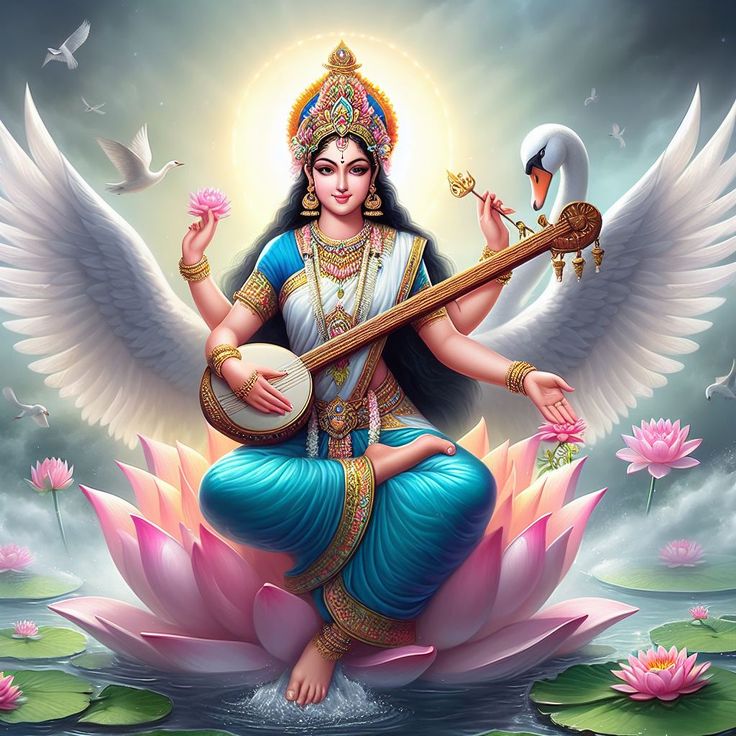
Saraswati and the Pursuit of Knowledge
Saraswati’s importance in Hindu education stems mostly from her representation of the continuous quest of knowledge and wisdom. Students, academics, and intellectuals all respect the goddess of learning since she offers supernatural graces to help them succeed in their intellectual and creative activities.
With invocations and hymns to Saraswati, the divine bestower of knowledge, the Vedas, the fundamental writings of Hinduism, praise her as the wellspring of enlightenment and the promoter of human consciousness. The epic stories of the Ramayana and Mahabharata, where Saraswati is called to provide the heroes with the required knowledge and abilities to negotiate the complexity of the world, further underline her respect as the source of wisdom.
Saraswati and the Arts
Saraswati is honored as the patron goddess of the arts, music, and literature, hence her impact goes much beyond the sphere of academics. Her connection to the veena, a stringed musical instrument, represents the harmonic resonance of the world and the rhythmic flow of artistic expression.
Hindu legend holds that Saraswati’s holy melody enthralled the celestial bodies, especially the Gandharvas, the divine musicians of the heavens, who are supposed to have learnt the art of music from the goddess herself. This story emphasizes Saraswati’s function as the inspiration for the arts, so encouraging artistic expression and creativity in every one who asks her blessings.
Constant reminder of the deep-rooted link between the search of knowledge, the development of the arts, and the divine feminine principle embodied by the goddess is Saraswati’s idols found in educational institutions and the respect accorded to her during celebrations like Vasant Panchami।

Saraswati and the Spiritual Diverse
Although Saraswati’s influence is mostly related to the domains of education, knowledge, and the arts, she is equally very important in the Hindu spiritual tradition. Respected for her transforming power and ability to shed the darkness of ignorance, Saraswati is one of the Mahavidyas, the ten incarnations of the Supreme Goddess.
The goddess Nila Saraswati, the Blue Saraswati, symbolizes the elimination of spiritual and intellectual challenges in the Shakta books, therefore reflecting the ferocious and courageous side of the divine feminine. This avatar of Saraswati reminds us that acceptance of the metaphysical and transcendence of the physical are necessary for real knowledge and wisdom to be reached.
Furthermore, Saraswati’s relationship with the Tridevi, the divine feminine trinity, emphasizes her part in the whole growth of the human person including the domains of knowledge, riches, and spiritual strength. Saraswati leads her followers toward the ultimate aim of spiritual enlightenment and emancipation since she is the representation of the creative and caring energies of the universe.
Saraswati’s Modern Relevance and Continuity
The continuing legacy of Goddess Saraswati in Hindu education and intellectual traditions is evidence of the ageless applicability of her lessons and the great influence she has had on the spiritual and cultural fabric of the Indian subcontinent and beyond.
Saraswati’s presence is still honored and appreciated in the current period; her idols line the hallways of academic institutions and her blessings are sought for artists, academics, and students all alike. The yearly celebration of Vasant Panchami and the customs linked with it, including the “Hate-Khori” and “Khadi-Chuan,” still vivid customs that link the present-day generation with the ancient wisdom and spiritual legacy personified by the goddess.
Emphasizing the quest of knowledge, the cultivation of the arts, and the attainment of spiritual enlightenment, the timeless lessons of Goddess Saraswati provide a great and enduring blueprint for the whole development of the person and the betterment of mankind as a whole as the world struggles with the challenges of the twenty-first century.
Conclusion
The great and varied character of the divine feminine principle is demonstrated by Goddess Saraswati’s ongoing importance in Hindu education and intellectual traditions. She inspires and guides researchers, students, and devotees alike, therefore fostering the search of truth and the reaching of spiritual enlightenment as the living example of knowledge, wisdom, and artistic expression.
Saraswati’s impact cuts across geographical and chronological lines, resonating with the universal human yearning for knowledge, artistic expression, and the transcendence of the material world through her varied mythological narratives, iconographic representations, and cross-cultural manifestations. .
The timeless wisdom and teachings of Goddess Saraswati remain a lighthouse of hope as we negotiate the complexity of the modern world, reminding us of the transforming power of knowledge, the beauty of the creative arts, and the ongoing relevance of the divine feminine in forming the intellectual and spiritual terrain of humanity.
#Saraswati #school #teaching #teachings Goddess #learning #education
